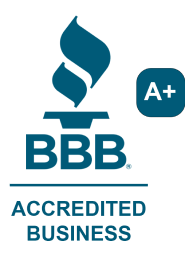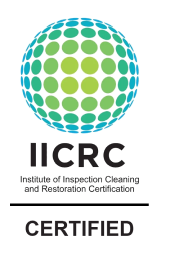
Following a flood or other water damage, it’s imperative to be able to quickly and accurately assess the extent of the damage to the structure. For this purpose, restoration professionals use specialized equipment called moisture meters. A qualified water mitigation technician will rely on moisture meters to determine where drying equipment should be placed and how long it needs to run.
Once any standing water has been extracted, heavy-duty fans and dehumidifiers will be placed throughout the affected areas. Drying itself can take as little as a few days up to a couple of weeks, depending on the types of materials present. IICRC-certified technicians are trained and equipped to continuously monitor the progress of your dryout, and will likely move the equipment periodically as they gather new readings from their moisture meters. This painstaking step helps ensure that your dry time is minimal, and that your property's moisture levels is returned to a healthy percentage (between 30-60%, usually) that will prevent mold growth.
What Is a Moisture Meter?
When your home or business is damaged by water, the damage goes deeper than what you can see with your naked eye. Water will creep through every crevice and soak into any porous material it encounters. Completely and properly drying the structure is necessary for the integrity of the building and health of those inside. Excess moisture can lead to the degradation of building materials as well as mold and mildew growth. Because of this, restoration contractors use moisture meters before, during, and after completion of work to assess the extent of the damage, monitor the drying process, and ensure the structure is completely dry upon completion.
Put simply, a moisture meter is a simple, yet essential instrument that detects the moisture content in a given material. The meters read the moisture content as a percent. Most meters are calibrated for wood and offer a relative scale for non-wood materials. Some also offer a third scale for gypsum. These are the meters that should be used for testing the moisture content of sheetrock. The accuracy of the meter is dependent on multiple variables, including the type of meter, brand of meter, material being tested, and aptitude of the user.
Types of Moisture Meters
There are three primary types of moisture meters most commonly used in restoration.
Pin-Type
Pin-type moisture meters use two pins to penetrate the material being tested. The pins are inserted to the desired depth, usually up to 5/16” deep, where the moisture content percentage is measured using the principle of electrical resistance. This means that the conductivity between the uninsulated pins is measured to determine the amount of moisture present in the material. Readings can also be taken by simply touching the pins to the surface of the material. Pin-type meters are generally considered invasive due to their penetrative nature, but they are the best way to pinpoint the exact location and depth of moisture build up because they can take readings at various depths of the material giving the location and percentage of moisture at any given depth. Is allows the user to differentiate between surface and core moisture content which is necessary information for accurate and efficient drying.
Pinless
Pinless moisture meters are non-invasive meters that use the principle of electrical impedance to detect moisture. While the scales on these meters work much the same way as pin-type meters, pinless moistures meters do not require even minor penetration into the material. They can typically read a depth of ¾-1” and are exceptionally useful for detecting problems where there is no visual damage such as concrete and other subfloors. They can also be useful for detecting moisture buildup behind and beneath tile and other finished surfaces.
All-In-One
Just like its name implies, an all-in-one meter combines a pin-type and pinless meter into one convenient tool. This type of meter can utilize both methods of testing to first identify general problem areas then pinpoint the exact location of moisture buildup. Utilizing the same scales as the two separate types of meter, this is an exceptionally versatile and convenient piece of equipment for restoration contractors.
No matter the type of meter used, moisture meters are an essential part of the water damage restoration process. These meters are used from start to finish to assess, monitor, and ensure completion of the drying process.
Subscribe to Innovative Restorations's Blog






Comments